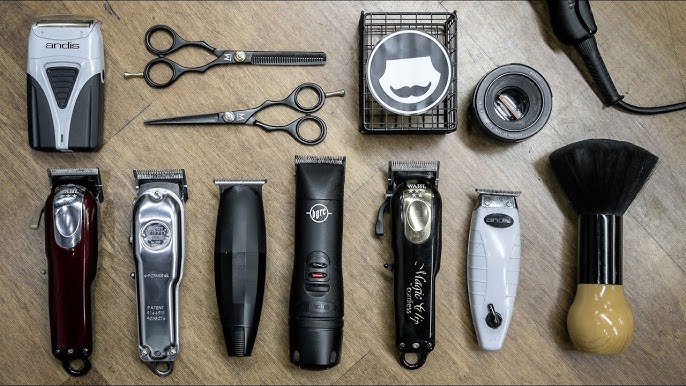Workplace Noise Monitoring for Safeguarding and Compliance

Workplace Noise Monitoring
Excessive noise in most industries is one of the major workplace hazards that can impose serious health problems, especially NIHL. Long-term exposure to excessively loud noise levels causes permanent damage to the hearing of workers and impairs communication, productivity, and safety, hence increasing the rate of accidents. Workplace noise monitoring becomes vital for protecting employees and following regulations. It examines the reasons why noise monitoring is paramount, the various ways this can be done, and the instruments of choice, presenting best practices that could ensure safety and compliance.
Why Is Workplace Noise Monitoring Important?
Noise monitoring is an important feature in workplace health and safety. It deals with assessing the level of noise workers are exposed to and ensures that such levels are within safe limits. High noise levels at work can lead to noise-induced hearing loss (NIHL), which is permanent and cannot be cured. Safe Work Australia reports that exposure to noise above 85 decibels (dB) on a regular basis for more than 8 hours a day may result in hearing damage. Suddenly reaching a peak noise level in excess of 140 dB can even cause immediate hearing loss.
Besides possible hearing loss, excessive noise can interfere with communication, attention, and overall work efficiency. Workers in an extremely noisy environment may not hear important instructions or warnings, thus putting them at greater risk from accidents. Noise monitoring outlines such risks so the employer can take action before serious health problems or accidents occur.
Legal Requirements for Noise Monitoring in Australia:
In Australia, the particular provisions in respect to the management of noise within the workplace are outlined by the Work Health and Safety (WHS) Regulations 2011. Employers shall make sure that the workers do not exceed the following limits in regard to noise exposure: The 85 dB on average during an 8-hour shift; 140 dB for peak noise levels (such as a sudden loud sound or explosion).
Exposure above these values comes under the obligation of employers to carry out noise assessments frequently. Businesses are compelled where the exposure exceeds the limits mentioned above to take immediate actions to lower exposure by engineering controls, administrative changes, or personal protective equipment.
Potential failure to monitor the levels and taking prompt actions would lead to legal penalties, workers’ compensation claims, and a lifetime health consequence for the workers.
The Noise Monitoring Process:
Noise monitoring involves several steps from identifying noise hazards, taking corrective actions to ensure compliance and protection of workers. Here is how it generally works:
1. Identification of Areas of Concern
Noise monitoring begins with the identification of areas where workers may be exposed to high levels of noise, which is usually generated through machinery, tools, or equipment. Sources that may commonly generate hazardous noise will include: Construction equipment: jackhammers and bulldozers. Manufacturing machinery: stamping machines and conveyors. Power tools: drills and saws. Vehicles: fork lifts, trucks.
There are also intermittent noise sources from alarms, impact noises, and sudden loud bursts that must be considered since they may present a risk to hearing even though they are not continuous.
2. Noise Levels Measurement
After listing potential noise hazards, real noise levels can be measured at these identified potential hazard areas. This will be done using special noise-measuring equipment designed to capture the correct noise data. Generally, there are two noise-monitoring tools:
Sound Level Meters (SLMs): These are portable instruments that measure the intensity of noise at a moment in time. SLMs are useful in conducting on-the-spot noise level checks across different locations within the workplace.
Noise Dosimeters: Worn by workers throughout the shift, dosimeters measure the total noise exposure over time. This also gives a more comprehensive view of what type of exposure to noise a worker is receiving throughout their day, especially when the level of noise can be changeable.
Noise levels are measured on the **A-weighted decibel scale (dBA)**, which takes into consideration the sensitivities of the human ear at different frequencies. The results are then compared against the legal exposure limits.
3. Interpretation of Results
After noise measurements are taken, they need to be analyzed to identify whether any noise levels exceed the legal thresholds. An area of the workplace that has a noise level above 85 dB for more than 8 hours or above 140 dB peak noise is obliged to take corrective measures to reduce exposure to workers.
4. Noise Control Measures Implementation
If exposure exceeds safe limits, employers should undertake controls to minimize exposure among workers. These generally fall into three categories:
Engineering Controls: These are physical modifications to a workplace or equipment to reduce noise generation at its source. Noise barriers, sound-dampening materials, or replacement of noisy machinery with quieter machines are some examples.
Administrative Controls: These are methods of adapting work practices to reduce exposure to noise. Examples include the rotation of workers in and out of noisy and quiet areas, limitation of the time they can spend in high-noise areas, or scheduling noisy tasks during off-peak hours when the number of employees in the area is smaller.
PPE: When the engineering or administrative controls cannot reduce noise sufficiently, earplugs or earmuffs shall be provided to workers.
5. Continuing Monitoring and Review
Noise monitoring should not be a one-time activity. Each workplace, in particular those that are either modifying existing equipment and processes or are introducing new ones, shall re-evaluate the noise levels periodically as a means of ensuring that safety thresholds are continually met. Continuous monitoring helps the enterprises find out new risks and confirm that controls that were previously working were still effective.
Best Practices for Effective Noise Monitoring:
To ensure that noise monitoring is properly effected for sustaining a safe work environment, businesses shall be guided by the best practices to follow:
1. Hire Competent Professionals
Noise monitoring is a specialized job, requiring both special expertise and equipment. Employ competent noise consultants or occupational hygienists to have noise assessments with accuracy, adequate to the regulatory requirements.
2. Conduct Assessments Periodically
Noise levels in workplaces can also vary over time, due to new equipment, procedures, or simply wear and tear on machinery. Noise assessments need to be conducted routinely to detect new risks and to verify that controls already implemented continue to perform well.
3. Involve Employees
Employees are normally the first to recognize excessive noise levels present in their area of operation. If employees are involved in the process of noise monitoring and asked to report noise-related concerns, early identification of risks may be realized, coupled with an overall effectiveness of noise control measures.
4. Provide Ongoing Training
Workers have to be trained in the usage of personal protective equipment as well as protection against hearing. The regular training will help employees understand the risks involved with noise and modes of protection
5. Maintain Detailed Records
The employers must keep a record of all noise-monitoring activities. That is, the records of assessment results plus control measures instituted. Records will be essential to prove that their regulatory standards have been met and also for the historical follow-up of noise exposure.
Conclusion:
Workplace noise monitoring is very vital in protecting employees from hazardous effects caused by excessive noise and establishing compliance with health and safety regulations. With regular assessment of noise levels, effective control measures, and continuous training, businesses can ensure a safer and healthier working environment. Noise monitoring, importantly, does not only prevent damage to hearing but also enhances productivity and reduces the risk of accidents, which are important features for a positive and efficient atmosphere at work.
Explore detailed insights and analyses on a wide range of topics at USA MAGENE







